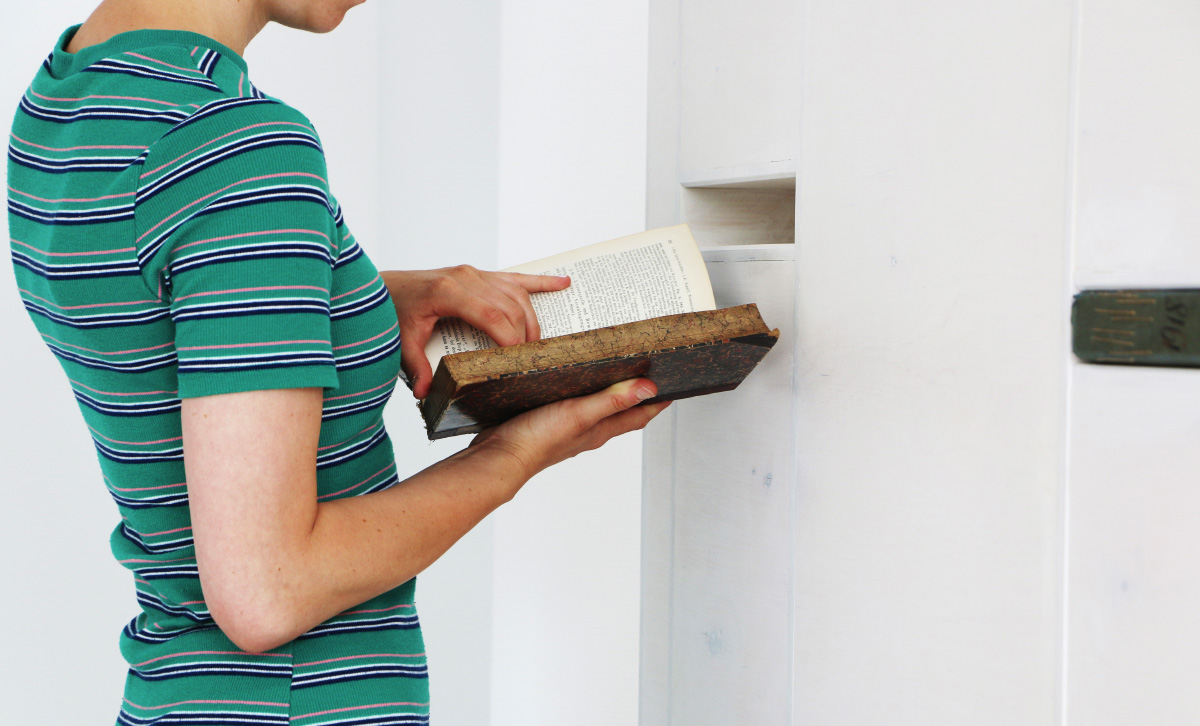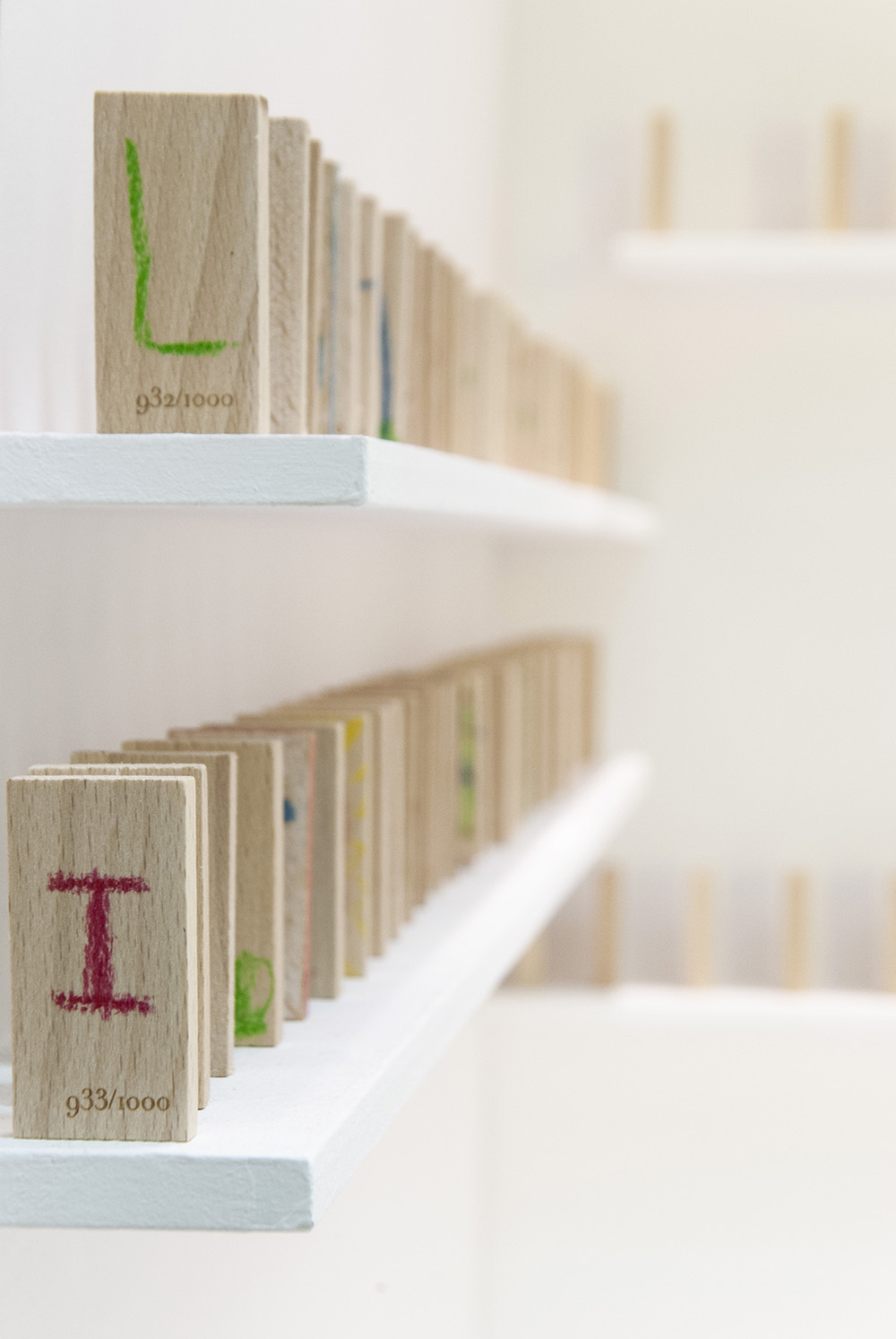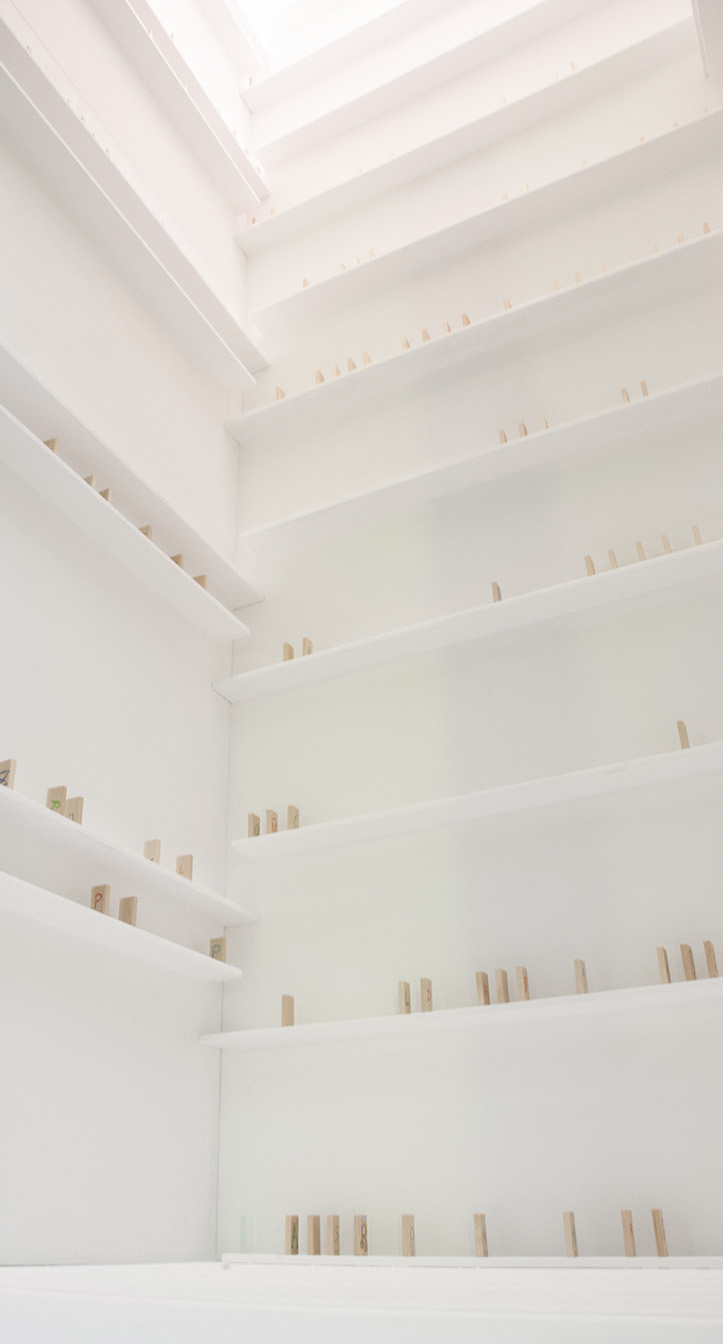

Tras su digitalización, los libros del código penal resultan superfluos, lo que lleva a la decisión de cerrar la Biblioteca del Consejo Regional de Kassel, Alemania. Tras la performance Vanishing Office y en recuerdo a este espacio, se concibe una instalación permanente conformada por los propios libros, en el espacio que hasta principios de 2017 albergaba a la antigua biblioteca.
Con Valeria Abendroth, Annika Boll, Paul Diestel, Selsela Khorasani, Hannah Lansburgh y Adina Schinauer. Gracias a Robin Isenmann, Silke kleine Kalvelage, Arisa Kawabe, Harald Knöfel, Susanne Mihm-Lutz, Prof. Norbert Radermacher y Tom Weitzmann. Sin su apoyo la realización de este proyecto no habría sido posible.
Una cooperación con la Biblioteca del Consejo Regional de Kassel, Alemania (Regierungspräsidium Kassel)
After digitization, the books of the regional Criminal Court’s library are superfluous, which leads to the decision of closing down the library of the regional council of the city of Kassel, Germany. After the performance Vanishing Office and in memory of this space, the permanent installation “Codex” is conceived. Made of the same books, it is housed in the space, where the library was.
With Valeria Abendroth, Annika Boll, Paul Diestel, Selsela Khorasani, Hannah Lansburgh and Adina Schinauer. Thanks to Robin Isenmann, Silke kleine Kalvelage, Arisa Kawabe, Harald Knöfel, Susanne Mihm-Lutz, Prof. Norbert Radermacher and Tom Weitzmann. The project would not have been possible without their support.
In cooperation with the Regional Criminal Court’s library of the city of Kassel (Regierungspräsidium Kassel), Germany.









CODEX, de la serie IóI. Instalación. Papel, cartón y madera de pino y abedul. Biblioteca del Consejo Regional de Kassel, Alemania. 2018
CODEX, of the series IóI. Instalación. Paper, wood, and cardboard. Regional Criminal Court’s library of the city of Kassel, Germany. 2018
.























